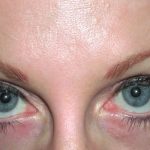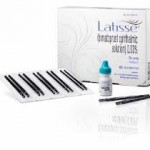Aging is inevitable and it begins to appear first around the eyes. With familiar names, such as crow’s feet, 11s, dark circles, bags and hooding, they indicate how visible and concerning these aging issues around the eyes can be. While surgical eyelid tucks and browlifts can offer dramatic improvements, many women and some men would prefer to try and prevent or even camouflage these eye flaws before considering surgery.
There is a progression of non-surgical treatments for keeping the eye area fresh and less old and tired looking. Known as periorbital (around the eye) rejuvenation, these include a variety of treatments combining neurotoxins, fillers, laser devices and topical products. These types of treatments usually follows the age of the person. Those in their 30s and 40s usually just need Botox to control the frowning and squinting. Fillers and light and laser treatments are added for those in the 40s and 50s. At 50 and beyond, only surgery can remove loose upper eyelid skin and lower eyelid bags. But these non-surgical treatments are still very useful to protect and maintain one’s surgical results.

While Botox is the backbone of non-surgical eye treatments, injectable fillers can also play a role. Many people will develop shadowing and tear troughs under the lower eyelid, sometimes as early as the late 30s and early 40s. This can be treated with fillers placed to fill out them out. While they are over a dozen types of injectable fillers, the hyaluronic acid-based fillers (e.g., Restylane and Juvederm) are preferred as they can be delivered smoothly into the thin skin of the lower eyelids with minimal risk of lumps and irregularities.
While eye lines and wrinkles can be held in check with Botox and fillers, they can not reverse skin color and texture problems. Broken blood vessels and brown spots can be improved with high energy light therapies known as IPL or BBL. These are often confused with lasers which they are not. But when it comes to improving skin textureand reducing fine lines and wrinkles, laser resurfacing around the eyes can produce results that not even a formal eyelid lift can do.

While surgery may be needed or inevitable for some, younger and less tired looking eyes may be just a few injections or the pass of a laser beam away.
Dr. Barry Eppley
Indianapolis, Indiana



